Giant 'cosmic snowball' K2 Comet receding in the sky but you can still spot the 'megacomet' this summer – here's how
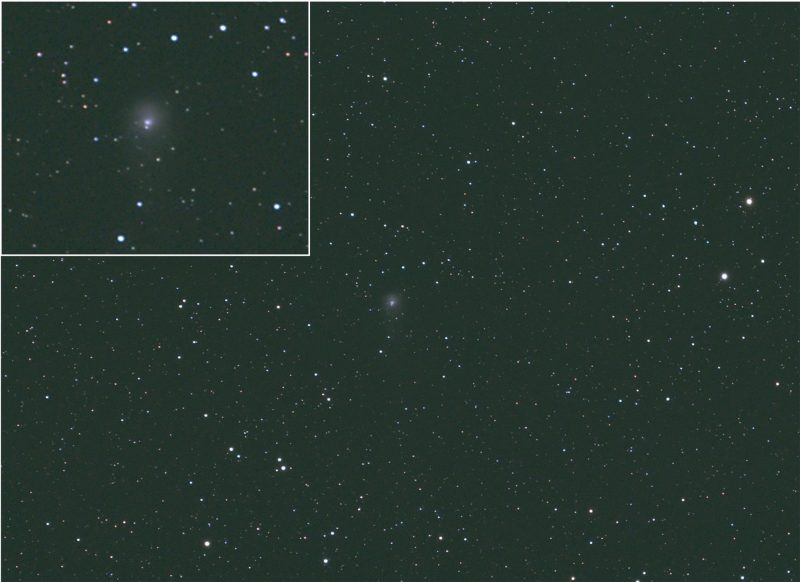
Comet C/2017 K2 (PanSTARRS)
Many with small telescopes take already been watching this summer'south best comet: C/2017 K2 (PanSTARRS). The comet is closest on July xiv, 2022. Although, it's not really peculiarly close at 172 million miles (277 1000000 km) away.
As luck would have it, the July 13 supermoon – and the brilliant waning gibbous moons for a few nights – are brightening the heaven effectually at present. Just dark skies will come up.
And, when they do, observers at night-sky sites, using pocket-size telescopes, should be able to meet comet K2 as a fuzzy patch of light. The fuzziness is mostly the comet's gigantic outer atmosphere, or coma. A hint of the comet'southward tail might be visible, while long-exposure images should reveal the comet and its tail in all its celebrity.
Astronomers estimate that Comet C/2017 K2 (PanSTARRS) has been traveling from the Oort deject for some three million years in a hyperbolic orbit.
It first became visible in small telescopes from the Northern Hemisphere in May and will remain visible until September. Afterwards mid-September, it'll be shut to the southwestern horizon every bit seen from the Northern Hemisphere. Afterwards, it'll be best for observers in the Southern Hemisphere.
Check the bottom of this page for charts!
The comet'due south backstory
Astronomers first spotted this comet in 2017 using the Pan-STARRS survey musical instrument in Hawaii. At the time, they said it was the farthest active inbound comet they'd yet seen. It was between the orbits of Saturn and Uranus when they first saw it. Now it's in the inner solar system, with closest approach to Globe on July 14. The comet will be closest to the sun several months after, on Dec nineteen, 2022. With a small telescope, you should be able to spot the comet throughout the summer.
Comets are mostly rock and ice. They get agile when warmed by the dominicus. Withal, this comet was already active in 2017. The Hubble Infinite Telescope took an image of the comet looking like a fuzzy snowball while information technology was nevertheless in the outer solar system. The comet appears to have a big nucleus, and it shows a huge cometary temper or coma.

PanSTARRS
If the name Comet PanSTARRS rings a bong, that'due south because there are many of them. Pan-STARRS is a sky survey that is particularly expert at spotting new asteroids, comets, supernovae and the like. This is Comet C/2017 K2 (PanSTARRS). At its discovery, K2 was 1.49 billion miles (2.4 billion km) from the sun. That's xvi times farther away than the Globe is from the sun.
Past the manner, the new title-holder for uttermost active comet is Comet Bernardinelli-Bernstein. Astronomers spotted this behemoth comet, about 100 times the size of a normal comet, when it was more than 2.seven billion miles (four.four billion km) from the lord's day. Comet "Bern-Bern" will take its closest arroyo on January 21, 2031. But you have nothing to fearfulness from it, as it will exist slightly farther away than Saturn's orbit.
Star charts
Below we have star charts through August to help you spot K2. Although it appears to exist a large comet, information technology volition probably remain a telescope object because it will laissez passer some 168 meg miles (270 one thousand thousand km) from Earth.
Information technology should burnish to magnitude 8 or maybe even 7, notwithstanding likewise dim for the unaided centre. Only you tin easily spot an object of this magnitude in a modest telescope. The darker the skies, the amend the contrast will be.
Comet K2 is big!
Initial observations from the Canada–France–Hawaii Telescope (CFH) suggest a nucleus for this comet about eighteen to 100 miles (xxx to 160 km). Merely observations with the Hubble Space Telescope indicate the nucleus should be smaller, at some 11 miles (18 km) or less.
If the proper noun K2 reminds y'all of the 2d largest mountain on Globe, likewise named K2, keep in mind that the mountain is 28,251 anxiety (8,611 meters) tall. If the comet K2 is effectually 11 miles or eighteen km (a reasonable approximate), that translates to about 58,000 feet or xviii,000 meters. In other words, the comet K2 dwarfs the mount K2, which is almost half its size.
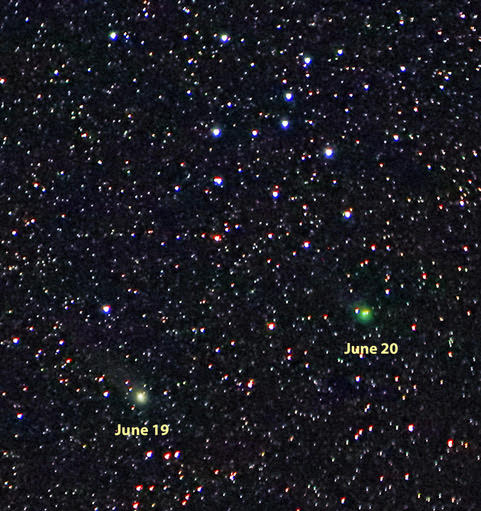
Nigh as big every bit Jupiter
Another indication that suggests C/2017 K2 is large, or at least very active, is that observations showed it developed a cometary temper, or coma, with a diameter of most 81,000 miles (130,000 km). That would mean this comet'south coma is a sphere of gases 10 times the diameter of planet Earth, or almost as big as the diameter of planet Jupiter. That's huge!
Also, some early observations detected an incredibly large tail, some 500,000 miles (800,000 km) long.
Scientists remember that comets that are too far from the sun shouldn't sublimate huge amounts of ice. And so this comet's activity is probably driven by a mix of ices with substances similar nitrogen, carbon dioxide, carbon monoxide and molecular oxygen.
Virtually comets have a nucleus of about 0.5 to 2 miles (ane to 3 km) in bore, while others may be up to 10 miles (xvi km) wide. All the same, a few are really huge, including Hale-Bopp (37 miles or threescore km), Bernardinelli-Bernstein (93 miles or 150 km) and 95P/Chiron, also known as 2060 Chiron) at 124 miles or 200 km. In fact, 95P/Chiron may exist a dwarf planet. Notwithstanding, information technology showed cometary beliefs and thus got a comet designation.
Finder maps for C/2017 K2

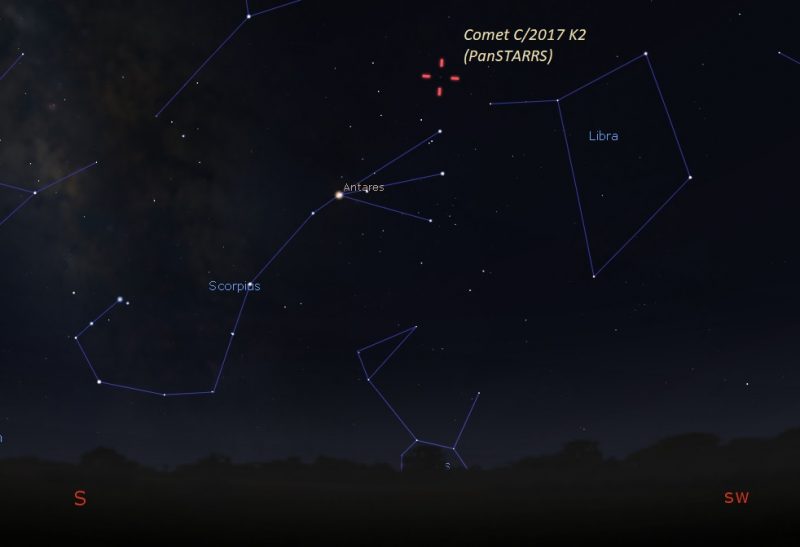

Custom finder charts from Heavens-Above
When volition we run across the next bright comet?
Comet C/2022 E3 (ZTF) is expected to be every bit bright as magnitude 5 in January 2023. Afterward that, the next possible good one appears to be comet 12P/Pons-Brooks, which might accomplish magnitude 5 or 4 in March 2024.
Meanwhile, permit's see what Comet C/2017 K2 has in shop for u.s.a.. Look up!
Comet C/2017 K2 images from our community
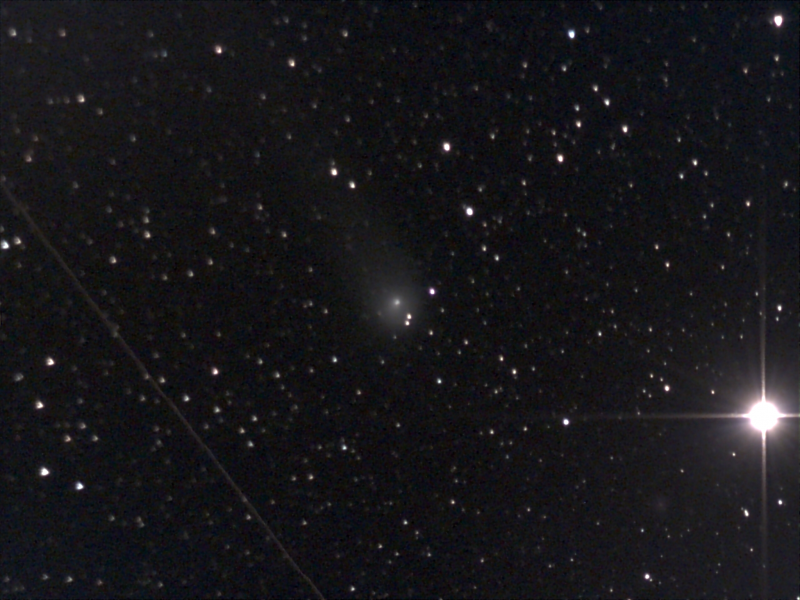
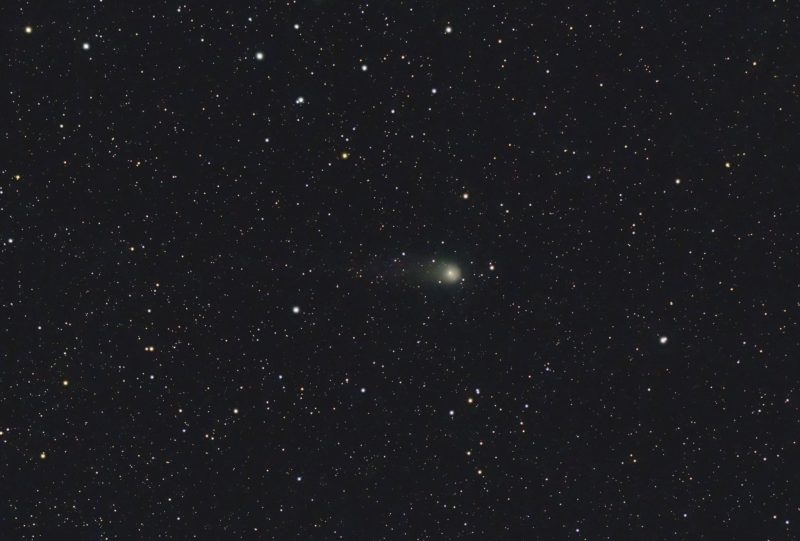
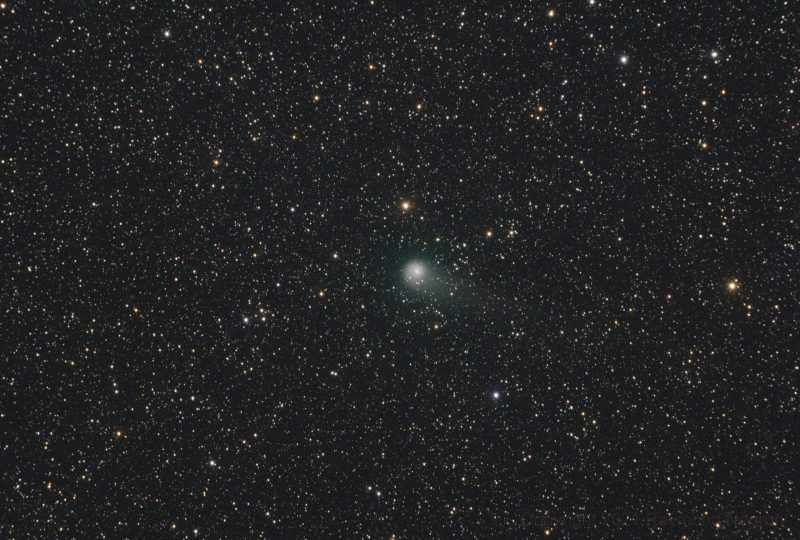
Lesser line: On July 14, 2022, comet C/2017 K2 (PanSTARRS) volition be closest to World. You can watch information technology with a small telescope.
Source: https://earthsky.org/astronomy-essentials/large-comet-c-2017-k2-panstarrs-summer-2022/
Posted by: broadhurstfolisn.blogspot.com

0 Response to "Giant 'cosmic snowball' K2 Comet receding in the sky but you can still spot the 'megacomet' this summer – here's how"
Post a Comment